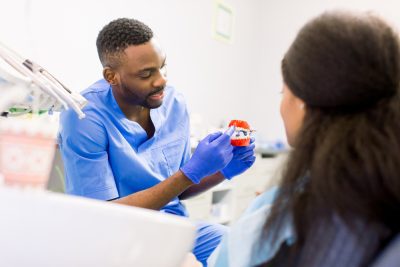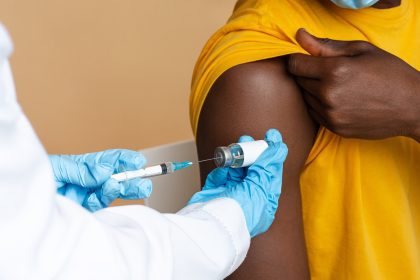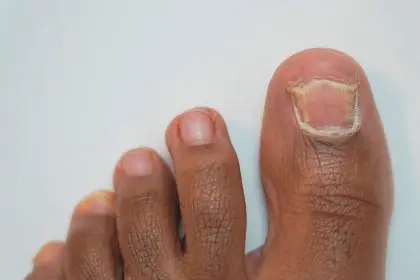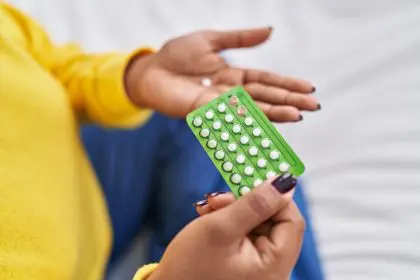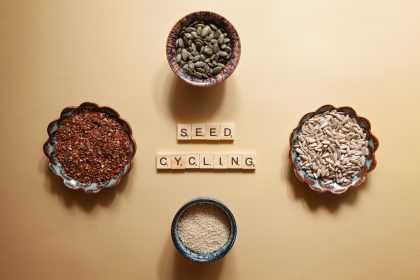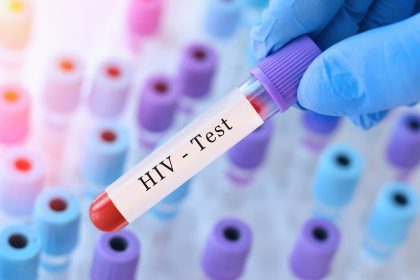Retronychia represents a relatively uncommon but increasingly recognized toenail disorder that disproportionately affects young adult women. The condition occurs when a toenail stops growing forward and instead grows backward into the surrounding nail fold tissue. Most frequently targeting the big toe, retronychia can transform a minor annoyance into a significant mobility challenge if left unaddressed.
Unlike more familiar nail conditions such as ingrown toenails that grow sideways into adjacent skin, retronychia involves the entire nail plate growing inward toward the cuticle. This distinctive growth pattern creates unique symptoms that many individuals mistakenly attribute to other foot problems, potentially delaying proper treatment and relief.
The footwear connection driving most cases
Improper footwear choices represent the primary culprit behind most retronychia cases. Shoes that compress the toes, particularly high heels that force weight forward onto the toe box, create persistent microtraumas to the nail matrix, the tissue responsible for nail formation. These repeated minor injuries eventually disrupt normal nail growth patterns, causing the nail to develop at an incorrect angle.
The relationship between footwear and retronychia explains why the condition affects women at significantly higher rates than men, as fashion footwear often prioritizes aesthetics over ergonomic design. Pointed toe boxes, elevated heels, and compressed forefoot areas create ideal conditions for retronychia development over time.
Beyond chronic pressure from ill-fitting shoes, acute toenail injuries can also trigger retronychia. Stubbing a toe forcefully, dropping a heavy object on the foot, or experiencing direct nail trauma during sports activities can damage the nail matrix sufficiently to alter growth patterns. These single traumatic events account for approximately 20% of retronychia cases.
7 cardinal signs that distinguish retronychia
Proper identification of retronychia symptoms allows for earlier intervention and more effective treatment outcomes. These seven characteristic signs differentiate retronychia from other common toenail conditions:
Persistent inflammation near the cuticle: Unlike typical ingrown toenails that cause pain along the lateral nail edges, retronychia creates distinctive redness and swelling at the base of the nail where it meets the cuticle.
Yellowing or thickening of the nail plate: The affected nail typically develops abnormal coloration and thickness compared to other toenails, creating a visibly different appearance that worsens over time.
Granulation tissue formation: A key diagnostic indicator involves the development of pink, bumpy tissue around the nail base—a inflammatory response to the backward-growing nail that creates a distinctive appearance.
Partial nail elevation: As the condition progresses, the affected nail often becomes partially detached or raised, particularly at the base, creating an abnormal angle and appearance compared to healthy nails.
Disappearing cuticle: The normal cuticle structure gradually diminishes as the nail growth disrupts this protective barrier, a visible change that podiatrists recognize as hallmark evidence of retronychia.
Fluid accumulation or discharge: Advanced cases frequently develop small pockets of fluid or pus beneath or around the nail, indicating secondary infection requiring prompt medical attention.
Pain with specific pressure patterns: Unlike general toe discomfort, retronychia creates characteristic pain specifically when pressure is applied to the nail base or when wearing closed-toe shoes.
The severity of these symptoms typically correlates with the duration of the condition, with early intervention generally yielding better outcomes and less complicated treatment pathways.
Medical evaluation essential for proper diagnosis
Podiatrists and dermatologists with nail expertise utilize several diagnostic approaches to confirm retronychia and rule out other conditions with similar presentations. Clinical examination remains the foundation of diagnosis, with healthcare providers examining the nail’s appearance, testing specific pressure points for pain responses, and evaluating the surrounding tissue.
Ultrasound imaging plays an increasingly important role in diagnosis, allowing visualization of the abnormal nail growth pattern beneath the surface. This non-invasive technique helps differentiate retronychia from other conditions like onychomycosis (fungal nail infections) or psoriatic nail disease that may present with superficially similar symptoms.
Some cases may warrant nail clippings for laboratory analysis to exclude fungal involvement, particularly when patients present with multiple affected nails or have risk factors for fungal infections. This comprehensive diagnostic approach ensures appropriate treatment targeting the actual condition rather than just addressing symptoms.
Treatment approaches from conservative to surgical
Management of retronychia follows a stepped approach, beginning with conservative measures and progressing to more invasive interventions when necessary. Initial treatment focuses on removing the underlying cause and reducing inflammation, often yielding significant improvement in mild to moderate cases.
Footwear modification represents the foundation of retronychia management. Switching to shoes with wide toe boxes, minimal or no heel elevation, and proper length prevents continued trauma to the nail matrix. For individuals whose occupations require formal footwear, podiatrists can recommend specific brands and models that maintain professional appearance while providing necessary toe space.
Topical corticosteroids may be prescribed to reduce inflammation around the nail fold, particularly in early-stage cases where significant granulation tissue has not yet developed. These medications help decrease swelling and pain while the nail growth pattern normalizes with reduced pressure.
For moderate cases, healthcare providers may employ taping techniques or specialized clips that guide the nail into proper forward growth. These mechanical approaches, combined with appropriate footwear, successfully resolve many retronychia cases without requiring more invasive interventions.
When conservative approaches prove insufficient, nail avulsion surgery becomes necessary. This procedure involves partial or complete removal of the affected nail under local anesthesia, allowing the nail to regrow properly from the matrix. While avulsion resolves most cases effectively, approximately 15% of patients require a second procedure for complete resolution.
Populations with elevated retronychia risk
While retronychia can affect anyone, certain populations face heightened vulnerability to this condition. Young adult women between ages 20-40 comprise the largest affected demographic, likely due to footwear choices during peak career and social years when fashion footwear predominates.
Individuals with certain systemic health conditions also experience increased retronychia risk. People with inflammatory arthritis, particularly psoriatic arthritis, develop nail changes that predispose them to abnormal growth patterns. Postpartum women represent another higher-risk group, as pregnancy-related hormonal changes affect nail formation, while the physical demands of childcare increase risk of toe injuries.
Athletes in specific sports, particularly runners, dancers, and those participating in activities with frequent stops and starts, experience higher retronychia rates due to repetitive nail trauma from forward pressure against footwear. This population often benefits from sport-specific preventive measures and footwear modifications.
Prevention strategies for maintaining healthy nails
Preventing retronychia revolves around minimizing both chronic and acute trauma to the toenails. These practical approaches significantly reduce risk without requiring major lifestyle adjustments:
Select appropriate everyday footwear with sufficient room for toes to lie flat and straight. The ideal shoe provides at least half an inch of space between the longest toe and the front of the shoe when standing.
Limit high heel wear to special occasions rather than daily use, and consider platform designs that reduce the angle between heel and forefoot, distributing pressure more evenly across the foot.
Address biomechanical issues that may increase pressure on specific toes, such as pronation or supination. Custom orthotics or appropriate over-the-counter inserts can help normalize foot mechanics and pressure distribution.
Protect toes during high-risk activities with reinforced footwear or protective equipment, particularly for sports or occupations with elevated risk of foot impacts or crushing injuries.
Maintain proper nail hygiene and trimming practices, keeping nails cut straight across rather than curved, which helps prevent the nail from developing an inward growth tendency.
For individuals who have previously experienced retronychia, these preventive measures take on additional importance, as recurrence rates remain relatively high without addressing underlying causes and risk factors.
When to seek immediate medical attention
While retronychia typically develops gradually, certain symptoms warrant urgent medical evaluation. Significant pain that prevents normal walking, visible pus around the nail fold, spreading redness beyond the immediate nail area, or fever accompanying nail symptoms requires prompt professional assessment to address potential infections before they progress to more serious complications.
With proper recognition, treatment, and preventive measures, most individuals with retronychia achieve complete resolution and return to pain-free mobility. The condition’s strong connection to modifiable risk factors means that simple lifestyle adjustments often yield significant improvements in both treatment outcomes and prevention of future episodes.


